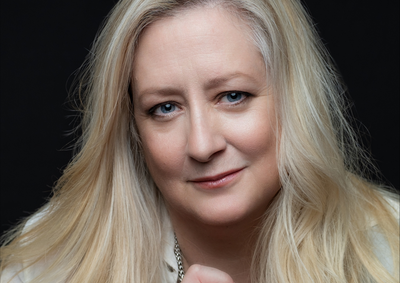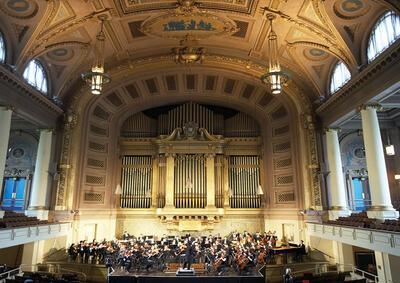NH Register: 8 composers’ take on Stravinsky’s ‘Rite of Spring’ in Yale’s Woolsey Hall
New Haven Register
By Donna Doherty
 NEW HAVEN >> One hundred years ago, the riot in the streets that greeted the Paris premiere of Igor Stravinsky’s “The Rite of Spring” ushered in a work now considered to be one of the most important pieces of 20th-century music.
NEW HAVEN >> One hundred years ago, the riot in the streets that greeted the Paris premiere of Igor Stravinsky’s “The Rite of Spring” ushered in a work now considered to be one of the most important pieces of 20th-century music.
It’s safe to say that there won’t be any rioting outside Woolsey Hall on Nov. 17 at 8 p.m., when the 85-member Zephyrus Project Orchestra pays tribute to the work with its only performance of “RiteNow: A Centennial Celebration of Igor Stravinsky’s ‘The Rite of Spring.’” Admission is free.
But those involved in it for more than a year probably wouldn’t mind a little notoriety for their ambitious and inventive project.
Would you believe the clarion solo bassoon opening has been replaced by a bagpipe? Not just any bagpipe — one played by gold medal-winning virtuoso Matthew Welch.
Welch is also one of eight composers conductor Paolo Bortolameolli commissioned to reinvent his favorite piece of music by assembling their compositions into a tableaux, mirroring the work in a 21st-century approach.
The Chilean conductor and recent Yale School of Music graduate called on eight colleagues there — Gleb Kanasevich, Paul Kerekes, Polina Nazaykinskaya, Daniel Schlosberg, Justin Tierney, Welch, Benjamin Wallace and Fay Kueen Wang — for the tableaux.
“The Rite” has been his favorite piece “for my entire life, from the very first time I heard it. In a way, what happened to me is it’s so powerful, the energy grabs your attention instantly, the sounds of the orchestra, the color, the energy, the rhythm, and, of course, you can relate it to a lot of different music you’ve heard — movies, ballet ...,” he says by phone from Baltimore, where he’s studying with Gustav Meier at The Peabody Institute at Johns Hopkins University.
Bortolameolli’s charge was to make it personal and reactive.
“At the end, I don’t want any kind of coherence in the style, because I want very individual reflections, so it’s your own style, your own stuff about ‘The Rite,’ how you as a single composer react to this magnificent piece,” he says of the work whose musical tonality and subject matter of ritual abduction and sacrifice give much to explore.
“The only structure I suggested was to be free, react to your own thoughts, and we will assemble all the pieces after, so it’s episodic.”
West Haven native Justin Tierney, who kind of fell into the role of co-producer, “because he was the most passionate of all of them,” says Bortolameolli, talks about those works.
Welch’s “really cool” solo “Ritual Fall” on bagpipe serves as the processional, with the musicians “walking through the hall, coming in from the outside and then sitting down.”
Kanasevich’s “Moment D’extase” calls on two timpani players to sonically capture a frenzied ecstasy as the world “coalesces and melts away.”
He calls Wang’s “The Unbearable Roller Coaster of Being and Black Hole Burial” “quite dark, a funereal piece dedicated to family and a close friend who died.”
Wallace uses maracas and congas in his work inspired by Brazilian jazz player Hermeto Pascaol, approaching it as if “Stravinsky went to Brazil and heard this music, what effect it would have on his music ...”
Kerekes’ short piece “uses material closest to ‘The Rite of Spring,’” says Tierney, whose own work (“NYSA I” and “NYSA II”) “focuses on the ritual aspect of ‘Rite,’ particularly the ancient pagan ritual that takes place in prehistoric times.”
Nazaykinskaya’s “Reading the Wind” captures the intangibles of magic and mystical devotion, and Schlosberg cryptically describes his piece “A Brief Descent into the Eleven Circles of Igor Stravinksy,” as if “I look into Igor’s eyes, and I call him what he is,” according to Tierney.
Tierney oversaw a Kickstarter campaign which raised $10,000 to cover costs of marketing and publicity and the venue rental.





